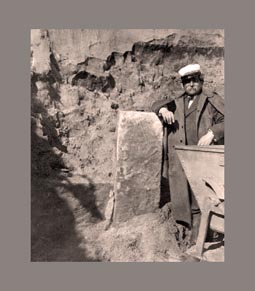 Study Day “The Salinas remembers SALINAS”
Study Day “The Salinas remembers SALINAS”
Regional Archaeological Museum “Antonino Salinas”
Piazza Olivella / Palermo /January, 23, 9.30
Download the press release
Download the program
 Study Day “The Salinas remembers SALINAS”
Study Day “The Salinas remembers SALINAS”
Regional Archaeological Museum “Antonino Salinas”
Piazza Olivella / Palermo /January, 23, 9.30
Download the press release
Download the program
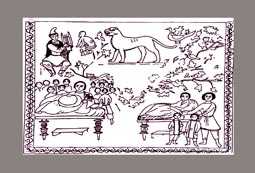 Organized by the Department of Humanities, University of Naples “Federico II”, and by National Society of Sciences, Letters and Arts in Naples, 22 to 23 January 2015. The conference follows a 2012 FIRB – Future in Research Project: “The perception of space and time in the transmission of collective identities. Polarizations and / or religious cohabitation in the ancient world (1st-6th cent. CE)”.
Organized by the Department of Humanities, University of Naples “Federico II”, and by National Society of Sciences, Letters and Arts in Naples, 22 to 23 January 2015. The conference follows a 2012 FIRB – Future in Research Project: “The perception of space and time in the transmission of collective identities. Polarizations and / or religious cohabitation in the ancient world (1st-6th cent. CE)”.
January 22 – University of Naples “Federico II”, Piovani Hall, Via Porta di Massa 1, Naples
January 23 – National Society of Sciences, Letters and Arts in Naples, Via Mezzocannone 8, Naples
.
Download the program
.
Thursday, January 15, at 17.30, at the Aula Magna Domus Sapientiae of the Department of Civil Engineering and Architecture of the Polytechnic of Bari, the author will present his latest book, dedicated to the wonders of the ancient world..
The prof. Antonella Prenner, University of Naples “Federico II”, will introduce the topic.
.
Download the poster
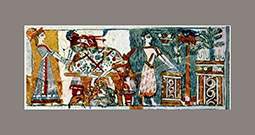 Period: 05/08/2015 – 09/05/2015
Period: 05/08/2015 – 09/05/2015
Faculty of Humanities – Sapienza University of Rome, Piazzale Aldo Moro 5
Odeion Hall, Museum of Classical Art
..
For all the information,, download the call for papers
 The Archaeological Museum “Antonino Salinas” in Palermo announced that the exhibition “Etruscans in Palermo” has been extended until 31 January 2015. The exhibition is housed in the picturesque setting of the eighteenth-century ” Real Albergo dei Poveri ” in C.so Calatafimi, 207 (Tel. 091/422314). This temporary arrangement allows the visitor to admire – reconstructed for the first time – one of the most important collections of Etruscan material existing in Italy, the Casuccini Collection; it includes about 10,000 artifacts and offers a complete and homogeneous testimony of the artistic production of the ancient Clusium. The exhibition ends with a section dedicated to the Archaeological Museum of Palermo, the history of its formation, the figure of Antonino Salinas and restoration work currently affecting the building.
The Archaeological Museum “Antonino Salinas” in Palermo announced that the exhibition “Etruscans in Palermo” has been extended until 31 January 2015. The exhibition is housed in the picturesque setting of the eighteenth-century ” Real Albergo dei Poveri ” in C.so Calatafimi, 207 (Tel. 091/422314). This temporary arrangement allows the visitor to admire – reconstructed for the first time – one of the most important collections of Etruscan material existing in Italy, the Casuccini Collection; it includes about 10,000 artifacts and offers a complete and homogeneous testimony of the artistic production of the ancient Clusium. The exhibition ends with a section dedicated to the Archaeological Museum of Palermo, the history of its formation, the figure of Antonino Salinas and restoration work currently affecting the building.
.
For more information, download the press release.
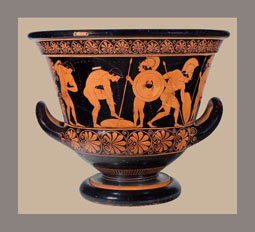 Stolen and illegally transferred abroad, the crater remained in the United States from the seventies until 1999 when, after long negotiations International, the find was returned to Italy and exhibited at the National Archaeological Museum of Villa Giulia in Rome. Since December 18, 2014 to January 20, 2015, the crater, which will return in Cerveteri after an absence of 40 years, will be exhibited at the National Museum Cerite, thanks to the collaboration of the Ministry of Heritage and Culture, the Superintendency for Southern Etruria and the Region of Lazio, on the occasion of the Tenth Anniversary of the Banditaccia Necropolis inclusion in the list of UNESCO World Heritage.
Stolen and illegally transferred abroad, the crater remained in the United States from the seventies until 1999 when, after long negotiations International, the find was returned to Italy and exhibited at the National Archaeological Museum of Villa Giulia in Rome. Since December 18, 2014 to January 20, 2015, the crater, which will return in Cerveteri after an absence of 40 years, will be exhibited at the National Museum Cerite, thanks to the collaboration of the Ministry of Heritage and Culture, the Superintendency for Southern Etruria and the Region of Lazio, on the occasion of the Tenth Anniversary of the Banditaccia Necropolis inclusion in the list of UNESCO World Heritage.
.
Thursday, December 18, 2014, at 11.00, in Cerveteri (Rome), at the Sala Giovanni Ruspoli, P.za Santa Maria, a press conference will announce to the public the initiative.
.
Will participate:
– Dario Franceschini, Minister of Heritage and Culture and Tourism
– Alfonsina Tagliente Russo, Superintendent for Southern Etruria
– Nicola Zingaretti, President of the Latium Region
– Ilaria Borletti Buitoni, Secretary of Heritage and Culture and Tourism
– Lidia Ravera, Regional Councillor for Culture and Youth
– Giovanni Bastianelli, Director of the Regional Agency for Tourism
– Giacomo Bassi, President of the Association for Italian Heritage in the Unesco World Heritage
– Rita Cosentino, Director of the Banditaccia Necropolis and the Ceritis National Museum
.
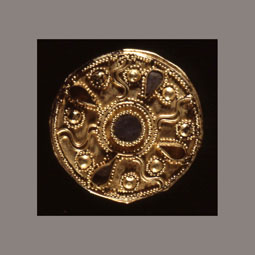 15 to 17 December 2014, at the Faculty of Humanities in Ro
15 to 17 December 2014, at the Faculty of Humanities in Ro
15 to 17 December 2014, at the Faculty of Humanities in Rome, , piazzale Aldo Moro
Classroom I, Odeion Hall
.
Download the program
me, , piazzale Aldo Moro
Classroom I, Odeion Hall
.
Download the program
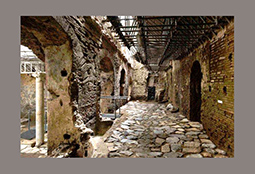 On 9 December 2014, at 11:00 am, at the Museo Archeologico Nazionale Romano “Crypta Balbi” in Botteghe Oscure street, no. 31, in Rome, the second edition of the “Riccardo Francovich” award will be held. The prize, established by the Society of Italian Medieval Archaeologists (SAMI), is conferred to the best medieval museum or archaeological park. This year, the award will reward the archaeological museum of the Crypta Balbi in Rome. The Minister of Heritage and Culture, Dario Franceschini, shall participate to the ceremony.
On 9 December 2014, at 11:00 am, at the Museo Archeologico Nazionale Romano “Crypta Balbi” in Botteghe Oscure street, no. 31, in Rome, the second edition of the “Riccardo Francovich” award will be held. The prize, established by the Society of Italian Medieval Archaeologists (SAMI), is conferred to the best medieval museum or archaeological park. This year, the award will reward the archaeological museum of the Crypta Balbi in Rome. The Minister of Heritage and Culture, Dario Franceschini, shall participate to the ceremony.
.
Further information: http://archeoroma.beniculturali.it/musei/museo-nazionale-romano-crypta-balbi
Download the poster
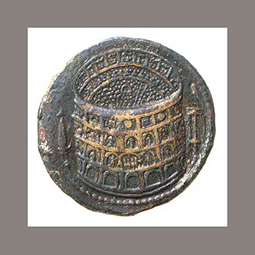 Meeting organized by the Department of Humanities and Architecture, University of Roma Tre, together with the PhD consortium Roma Tre – Polytechnic of Bari “Architecture: Innovation and cultural heritage” and the Interdepartmental PhD “Landscapes of the contemporary city: policies, techniques and visual studies “.
Meeting organized by the Department of Humanities and Architecture, University of Roma Tre, together with the PhD consortium Roma Tre – Polytechnic of Bari “Architecture: Innovation and cultural heritage” and the Interdepartmental PhD “Landscapes of the contemporary city: policies, techniques and visual studies “.
Speakers: Daniele Manacorda, Francesco Cellini, Paolo Desideri, Elisabetta Pallottino
Wednesday, December 17, at 16 .00, – Via Ostiense 234
Department of Humanities – Council Hall
.
For more information: Agenzia per la Ricerca e Dottorati, Dipartimento di Architettura
Università degli Studi Roma Tre, via Madonna dei Monti, 40 – Roma, 00184, tel +390657339608.
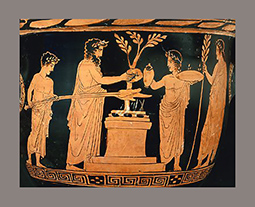 Organized by Antrocom Onlus and by Museum of Religions “Raffaele Pettazzoni”, Velletri (Rome), in the period July, 7 to 11, 2015.
Organized by Antrocom Onlus and by Museum of Religions “Raffaele Pettazzoni”, Velletri (Rome), in the period July, 7 to 11, 2015.
The conference aims to investigate in an interdisciplinary point of view the mechanisms underlying the functionality that food and nutrition can play in religious contexts and traditional beliefs. Cultural areas of interest are the civilizations of the Ancient, Medieval, Modern and Contemporary World, as well as the folkloric or ethnographic contexts.
. .
For more information, download the call for papers
This website uses cookies to improve your experience while you navigate through the website. Out of these cookies, the cookies that are categorized as necessary are stored on your browser as they are as essential for the working of basic functionalities of the website. We also use third-party cookies that help us analyze and understand how you use this website. These cookies will be stored in your browser only with your consent. You also have the option to opt-out of these cookies. But opting out of some of these cookies may have an effect on your browsing experience.
This website uses cookies to improve your experience while you navigate through the website. Out of these cookies, the cookies that are categorized as necessary are stored on your browser as they are as essential for the working of basic functionalities of the website. We also use third-party cookies that help us analyze and understand how you use this website. These cookies will be stored in your browser only with your consent. You also have the option to opt-out of these cookies. But opting out of some of these cookies may have an effect on your browsing experience.
Necessary cookies are absolutely essential for the website to function properly. This category only includes cookies that ensures basic functionalities and security features of the website. These cookies do not store any personal information.
Any cookies that may not be particularly necessary for the website to function and is used specifically to collect user personal data via analytics, ads, other embedded contents are termed as non-necessary cookies. It is mandatory to procure user consent prior to running these cookies on your website.
